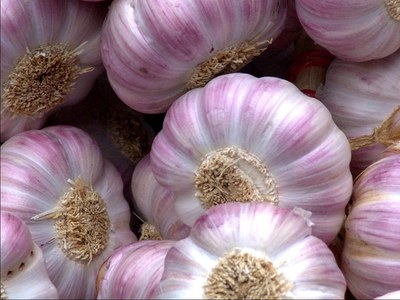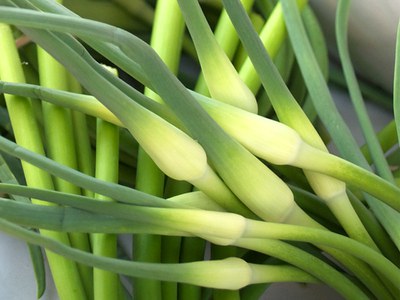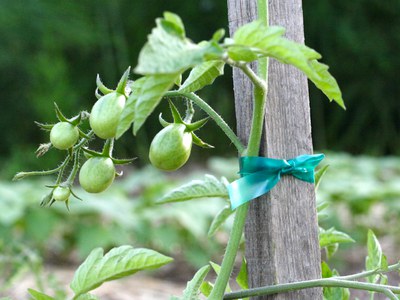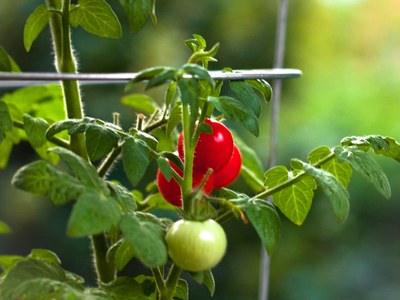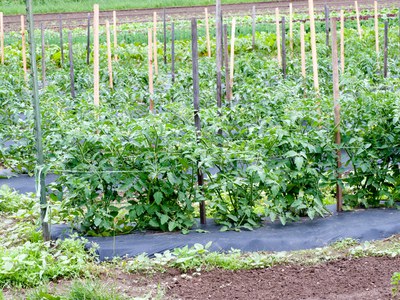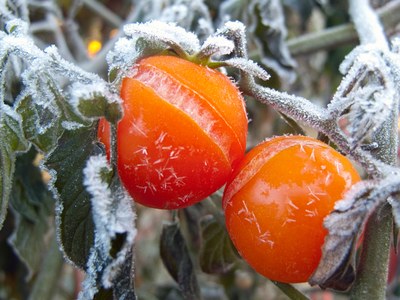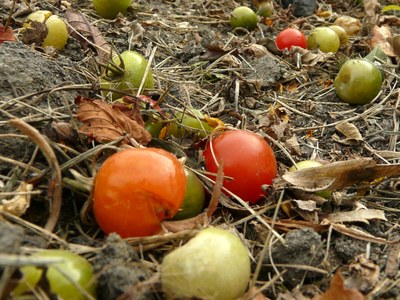Documents
The Best Peas for North Dakota
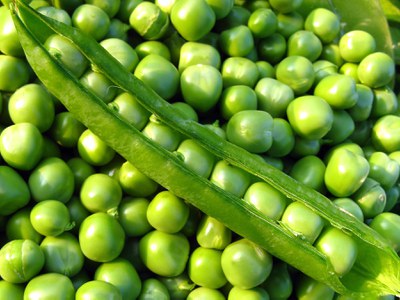 |
| Shell peas are very popular in North Dakota. |
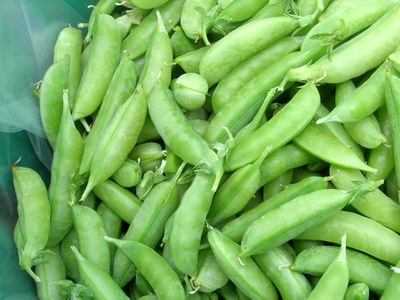 |
| The pods of snap peas are juicy and crunchy. |
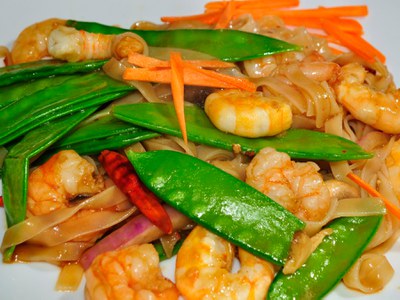 |
| The crisp, sweet pods of snow peas are delightful in stir fries. |
Garden peas are a very popular vegetable grown in North Dakota. Nothing tastes better than picking a fresh pod, shelling it in the garden, and popping the sweet peas into your mouth. Delicious!
Research conducted by hundreds of families in North Dakota have identified for us some of the finest varieties of peas. Working as volunteers in the North Dakota Home Garden Variety Trials, these gardeners have rated pea varieties for germination, vine health, earliness, yield and taste qualities over 11 years. In each trial, we compare two varieties side by side in the garden. The following is a summary of our findings:
Shell Peas
‘Lincoln’ is the finest, most reliable pea for gardeners in North Dakota. We have compared ‘Lincoln’ to many different varieties including ‘Bountiful Ben’, ‘Early Frosty’, ‘Green Arrow’, ‘Maestro’, ‘Mr. Big’, ‘Progress No. 9’, ‘Sabre’ and ‘Sienna’. In each trial, more gardeners recommended ‘Lincoln’. This is an amazing track record, covering all kinds of weather conditions from year to year.
In 2019, 92% of gardeners recommended ‘Lincoln’ to other gardeners. ‘Lincoln’ germinates reliably and matures early. Its sturdy vines are productive and yield over an extended period. ‘Lincoln’ pods are large, attractive and easy to shell. Its peas are sweet and delicious.
Other noteworthy performers include ‘Green Arrow’ (large pods), ‘Wando’ (resists heat), ‘Knight’ (robust vines and yields) and ‘Maestro Improved’ (early). Good freezers noted for earliness and concentrated yields include ‘Early Frosty’ and ‘Little Marvel’.
Snap Peas
Snap peas were a breeding breakthrough 40 years ago. These peas have crunchy, juicy pods that do not require shelling. This saved gardeners a lot of time and their edible yields soared. The pods are eaten as a raw snack or may be lightly cooked.
‘Sugar Ann’ is the finest snap pea for North Dakota. Its vines are dwarf (do not require a trellis), healthy and productive. Yields are early and the pods are delicious. We have tested it for six years, and it was judged superior by gardeners every year. Last year it was recommended by 88% of gardeners. Among other dwarf varieties, ‘Sugar Sprint’ produces a good early crop and is good for freezing.
The most famous snap pea is ‘Super Sugar Snap’. This tall-vined variety requires trellising. It grows vigorously and produces high yields. It was recommended by 71% of gardeners last year.
New snap pea cultivars with purple and golden pods have been appearing in catalogs in recent years. In 2017, we tested ‘Sugar Magnolia’, which is the most widely available purple-podded snap pea. Its violet flowers and pods were absolutely beautiful, but its pods were tough and tasteless. This was quite a disappointment as only 32% of gardeners recommended it.
Snow Peas
These edible-pod peas are harvested just as the peas inside the pods begin to swell. Snow peas are wonderful when used in stir fries and salads. ‘Sweet Horizon’ produces the highest quality pods; these pods are bright green, sweet and noticeably straighter. ‘Oregon Sugar Pod 2’ will produce earlier and higher yields. For large pods, you can’t beat ‘Oregon Giant’.
Finding These Varieties
All of the varieties mentioned above are widely available in seed catalogs. You can Google them and find many seed sources. Click here for a complete list of recommended vegetable varieties as well as major seed companies that offer free catalogs. Now is a great time to request for these free catalogs.
We Invite You to Join Our Team
Would you like to test promising pea varieties in your garden? North Dakota State University welcomes you to join our team of backyard garden researchers. It is one of the largest teams of agricultural researchers in the nation. Over 200 families participate every year. The trials are fun and easy to conduct.
For more information, go to the North Dakota Home Garden Variety Trials website. Request our online catalog and we’ll send it to you in March. We test over 50 different kinds of vegetables and flowers every year. All gardeners are welcome to participate. It’s a fun project for kids, too.
Written by Tom Kalb, Extension Horticulturist, North Dakota State University. Photos courtesy of Dave Gunn, Julie and jeffreyw.
Grow Your Own Garlic
The weather is cooling down and frost is approaching. Now is not the time to rest. There will be plenty of time for resting during the long winter.
Now is the time to plant garlic! It will add amazing flavors to your meals next summer.
Garlic types include hardneck, softneck and elephant. Hardneck types are hardiest and most suitable for us in North Dakota.
Numerous seed companies offer garlic cloves. It’s important to order your cloves as soon as possible. Supplies of the finest varieties are limited and in high demand.
There are many wonderful hardneck types available from around the world. There are robust varieties from Germany and Spain, bold flavors from the Middle East, crisp flavors from Siberia, and mild varieties from Vietnam. The bulbs come in an attractive array of solids and stripes in shades of pearl white to royal purple.
Garlic grows best in a rich, well-drained soil. Add an inch of compost to the site and up to 3 pounds of 10–10–10 per 100 square feet. Work this into the soil.
Bulbs are planted soon after the first hard frost, which is usually in late September or early October.
Separate cloves from the bulbs a day before planting. Set cloves upright in the furrow, 4–6 inches apart and 2 inches deep. Space rows 18–30 inches apart.
Water deeply to activate the bulbs. The bulbs will push out roots and underground shoots this fall. Mulch with 4 inches of straw in November. This straw will insulate the soil and protect the sprouted bulbs.
The flower buds (scapes) can be harvested in June. They are mild in flavor and great in stir fries.
Harvest the bulbs in July. Then get ready for some of the most delicious meals you have ever eaten!
Written by Tom Kalb, Extension Horticulturist, North Dakota State University. Much of this information was originally published in the NDSU Yard & Garden Report, August 11, 2014. Photos were made available under Creative Commons licenses specified by the photographers: Felix; danbruell.
How To Stake Tomatoes
Supporting tomato vines will lead to healthier plants, higher yields and better quality fruit. Here are popular options for supporting vines, each with its advantages and disadvantages:
|
Staking. The traditional stake maximizes sunlight to the plant and leads to earlier yields and larger fruits. Bamboo poles or 1-inch-square (or wider) stakes are used, spacing plants about 24 inches apart. Stakes are placed about 3 inches from the plants. Sisal twine or strips of cloth are used to secure the vines to the stakes. Staking tomatoes will expose the soil to drying, which may lead to higher incidences of blossom end rot compared to non-staked tomatoes. |
|
|
Caging. Caging tomatoes will lead to high yields of quality fruits. Get the strongest cages you can find. Better yet, make your own cages using 6-inch-mesh concrete reinforcing wire. Cut off 6.5 feet and bend it into a circle. This will make a cage 2 feet across and 5 feet high. Remove the bottom horizontal ring and poke the loose wires into the soil. Cages may be cut in half for determinate varieties, which grow shorter. Tomato vines grown in cages have been reported to produce the highest yields of marketable, crack-free fruits compared to vines grown under other support systems. The fruits are well protected from sunburning. Caged vines are reported to produce later crops compared to vines grown under other support systems.
|
|
|
Trellising. Many large-scale growers use the string-weave system. Sturdy metal stakes are pounded at the ends of the row. Wooden or metal stakes are placed between every other plant. Weather-resistant sisal or nylon twine is tied at the end stake. The twine is then strung down to the next stake in the row and looped around the stake, keeping the twine taut. Stringing continues to the next stake, looped around, and so on to the end of the row. Then it is looped around the end stake and run down the other side of the row. The first twine is placed about 12 inches off the ground and new rows of twine are placed every 8 inches up the stakes as the vines grow. This system receives very good, but not great ratings for all fruit quality and yield traits. |
Written by Tom Kalb, Extension Horticulturist, North Dakota State University. Photos courtesy of gregw, Dov Harrington and Dwight Sipler. Sources of information: Cox, Bonnie. 2019. Training systems and pruning in organic tomato production. Oregon Tilth, Corvallis.
Understanding the Romaine Lettuce Recall
As a horticulturist and as a mom, I have been following the romaine lettuce recall with great interest. My family and I are avid consumers of green leafy vegetables. The recall of E.coli contaminated lettuce from central coastal California has prompted more questions than answers.
A great deal of romaine lettuce is produced in central coastal California even during summer. For those of you that have grown lettuce in North Dakota, you may have experienced the challenges of growing during the summer heat. We frequently experience lettuce that bolts—it produces flowering stalks and the leaves turn bitter. This is even more problematic in head lettuces like romaine. How can California producers grow lettuce during summer without bolting? Well, the climate in central coastal California is different than we expect. While attending a summer wedding in California, we drove (and ate our way) right through the heart of this lettuce, artichoke, and Brussel sprout producing region. We landed in San Jose where the temperature was 98 deg. F. We then drove to Monterey. While the distance was only 70 miles, we watched the temperature drop by over 30 degrees within the span of an hour. This coastal area with its cool summer temperatures can grow cool season crops better than North Dakota growers during the months of June and July! Also, this region is surprisingly rural with lots of cattle ranches in addition to produce farms.
What could have caused the E. coli contamination? Nobody knows for sure at this point. The source for E. coli is fecal matter. The contamination of lettuce fields can come from multiple sources. Feral animals such as pigs, deer, and birds can deposit their feces directly on plants or on the soil. Improperly composted manure can be a source of contamination. Runoff from feedlot operations can contaminate fields or irrigation canals that supply water. The previous spring 2018 E. coli outbreak on romaine was traced to an irrigation canal that ran adjacent to a feedlot near Yuma, AZ. However, the causal connection for that outbreak was not definitively proved. The Yuma outbreak may have been exacerbated by plant stress from a frost coupled with high winds that may have spread dust contaminated with the E. coli pathogen.
The horticulture industry is rightly concerned about the safety of the produce they produce. As we head into the future, expect more pre-harvest regulations concerning buffer zones between feed lots and lettuce production fields. In addition, water quality of irrigation water may be more tightly regulated. Even the composting process for manure is being scrutinized. Post-harvest, we may see more traceability of product back to the source and the ability to implement recalls much sooner.
Can you as a consumer wash or surface-sterilize lettuce leaves to mitigate potential contamination? That may be a better question for our Food and Nutrition Specialist, Julie Garden-Robinson. I would fully expect her to advocate thorough washing of all produce as a matter of practice. However, washing or even surface-sterilization of contaminated lettuce leaves may not be enough. Recent studies show that bacteria such as Salmonella, E. coli, and Listeria can be internalized into plant tissue in certain situations. Washing or surface-sterilization cannot help in that situation.
Finally, are romaine lettuce heads more susceptible to contamination than other types of greens? From a logical point of view, it makes sense that tight heads of lettuce such as iceberg might be a little more protected. In addition, people can discard the outer leaves of iceberg lettuce if they are worried about contamination. Romaine lettuce heads are much more open and loose than iceberg heads. More scientific studies are needed to determine whether romaine is more susceptible to contamination than other types of lettuces.
The general public may be concerned that frequent recalls are a sign that the industry is unsafe. The converse may be true. In the past, foodborne outbreaks may not have been discovered. Now with the advent of DNA analysis, we can more quickly find an ongoing outbreak and institute a recall before more people get sick.
As a mom, I will continue to serve romaine lettuce on my dinner table once the foodborne outbreak is deemed finished. I have faith that the horticulture industry and the government are working hard to improve food safety of our produce.
Here are a few food safety tips from Julie Garden-Robinson:
- At the store, keep fresh fruits and vegetables away from fresh meats. Place meats in the plastic bag available in many stores, and keep in separate areas of your cart. Place vegetables and fresh meat in separate bags to take home.
- Before preparing food, wash your hands thoroughly for at least 20 seconds with plenty of soap and warm water.
- Cut away bruised or damaged portions of produce.
- Rinse fruits and vegetables under cool running water (no soap) before cutting and preparing for recipes. However, ready-to-eat bagged lettuce does not need to be re-rinsed. Use a produce brush to scrub the exterior of fruits such as cantaloupe.
Frost Threatens Gardens
Jack Frost is threatening our gardens. It's time to protect our tender plants.
Frost kills plants by exploding their cells. When cells freeze, they expand and the cell walls burst open. It’s like putting a can of soda in the freezer; the liquid expands and the aluminum can bursts! Frost-damaged plants look water-soaked and mushy.
Garden plants differ in their abilities to tolerate frost. The most sensitive vegetables include tomato, pepper, cucumber and squash. These plants require protection. Cabbage, kale and root crops (carrots and radish) tolerate light frosts.
The most sensitive flowers include geranium, impatiens, begonia, zinnia, portulaca and coleus. Hardier flowers include aster, cosmos, morning glory, marigold and petunia.
How do you protect your plants? That’s easy. Pretend YOU are outside in the garden. What would you wrap around yourself to stay warm?
I would want a blanket and so would your plants. Cloth or burlap blankets can provide a few degrees of protection. Newspapers and plastic sheets provide less protection.
Consider using layers of protection. Just like we use layers of clothes to keep warm, garden plants benefit from layers of protection. Two blankets are better than one.
This protection may give you an extra week of gardening. But when a hard frost (28°F or below) is expected, nothing will save your sensitive plants. Run outside and harvest whatever you can!
Written by Tom Kalb, Extension Horticulturist, North Dakota State University. Photos were made available under Creative Commons licenses specified by the photographers: Anonymous and Emily.
Pumpkins: Think PINK
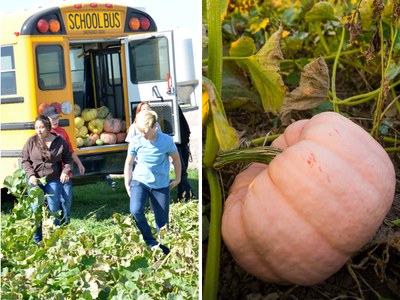 October is Breast Cancer Awareness Month. Pink ribbons are on display everywhere to promote early detection of the disease.
October is Breast Cancer Awareness Month. Pink ribbons are on display everywhere to promote early detection of the disease.
We can fight breast cancer by purchasing or growing PINK PUMPKINS.
Breast cancer is the second most common type of cancer in women. About 1 in 8 women born today in the United States will get breast cancer at some point (U.S. Department of Health and Human Services, 2015).
The Pink Pumpkin Patch Foundation was established in 2012 to supports organizations involved in breast cancer research. Farmers and community groups grow and sell pink pumpkins with a portion of the proceeds going to raise money for the foundation.
Local groups include the Williston High School Future Farmers of America (FFA). Kimberly Holloway of NDSU and Carrie Bolstad of FFA coordinate this project, which is supported by the NDSU Junior Master Gardener Program (see left photo). "I enjoy the energy these kids bring to this endeavor," Holloway said. So many of them have someone in their family who is fighting or has fought cancer, that it becomes a very personal thing for them."
A special variety, ‘Porcelain Doll’ was developed to support these projects. Besides its distinctive pink rind, the pumpkins have a sweet, dark orange flesh. This flesh is great for pies, soups and treats. It’s very nutritious and full of cancer-fighting antioxidants. ‘Porcelain Doll’ is offered by many seed companies.
Look for pink pumpkins at your local farmers market. Next year, grow your own pink pumpkins and join the battle against breast cancer. For more information, go to pinkpumpkinpatch.org.
Source: U.S. Department of Health and Human Services. 2015. October: Breast cancer awareness month. http://healthfinder.gov/nho/octobertoolkit.aspx. Photo at right courtesy of University of Missouri College of Agriculture, Food and Natural Resources.
Grow your own gold
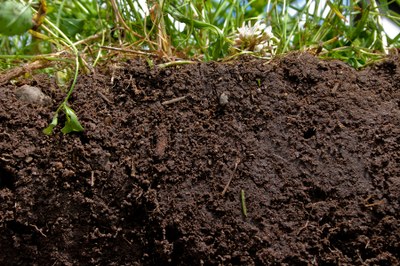 Do you want to improve the soil in your garden? Add organic matter. Organic matter is so valuable it is sometimes called “black gold” by gardeners.
Do you want to improve the soil in your garden? Add organic matter. Organic matter is so valuable it is sometimes called “black gold” by gardeners.
The addition of organic matter will improve nearly every soil. In clay soils, organic matter breaks open the ground, allowing for better drainage and aeration. In sandy soils, organic matter helps soil to hold onto nutrients and water. Organic matter adds nutrients too.
You can add organic matter to your soil by sowing a cover crop now. These crops will blanket the soil and protect it from eroding over winter. Cover crops will capture nutrients deep in the soil and bring the nutrients near the surface for next year’s crop. Cover crops can collect snow, improve drainage and reduce weeds in the future.
Cover crops can be sown in any area of the garden that is finished producing vegetables. You can also sow between the rows of crops that are still producing.
At this time of year there are two strategies for growing cover crops:
Oats (Avena sativa) should be sown now. The oats will put on good growth this fall and die over winter. It will be easily tilled into the soil in spring or mowed and left as a mulch. This is a good option for land where you plan on growing early spring crops such as carrot, spinach and pea. Annual ryegrass (Lolium multiflorum) is an alternative to oats.
Winter rye (Secale cereale) can be planted anytime in September (the sooner, the better). Winter rye will grow vigorously this fall and begin growing again in spring. This is a good strategy for land that will be planted late in spring with warm-season crops (tomato, cucumber and squash). Mow and then cultivate the rye into the soil in early May. No-till gardeners can spray it with glyphosate in spring to kill it. Give it a couple weeks to break down and then plant your crops at the end of the month. Winter wheat (Triticum aestivum) is an alternative to winter rye.
Seeds are available from catalogs and farm supply stores. Sow oats at 4 oz., winter rye and winter wheat at 3 oz., and annual ryegrass at 2 oz. per 100 square feet.
Written by Tom Kalb, Extension Horticulturist, North Dakota State University. The photo was made available under a Creative Commons license specified by the photographer: Natural Resources Conservation Service. This article was originally published in the NDSU Yard & Garden Report. Sources used for this article: Cornell University. 2013. Improve your soil with cover crops. Ithaca, NY; and Johnny's Selected Seeds. 2015. Cover crops comparison. Albion, ME.





